 Facebook
Facebook
 X
X
 Instagram
Instagram
 TikTok
TikTok
 Youtube
Youtube
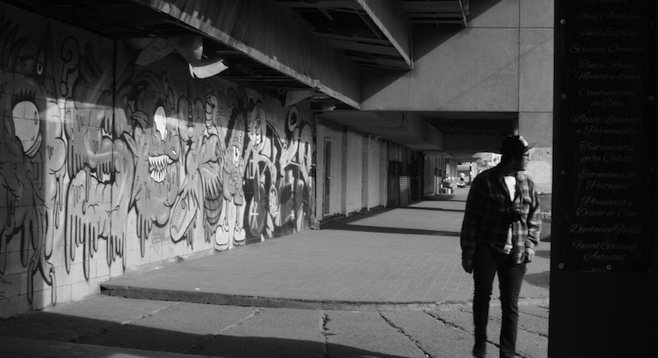
“I’m really shy about my photography,” says Zia Rodelo. “I don’t show it to just anyone.”
25-year-old Rodelo, who lives in University Heights, declined the offer of a gallery show in her hometown of El Centro. She was into the idea at first, but she backed out when she got anxious about the exposure. Publishing her photographs and a link to her website in the Reader will be her first step, as it were, towards conquering that nervousness.
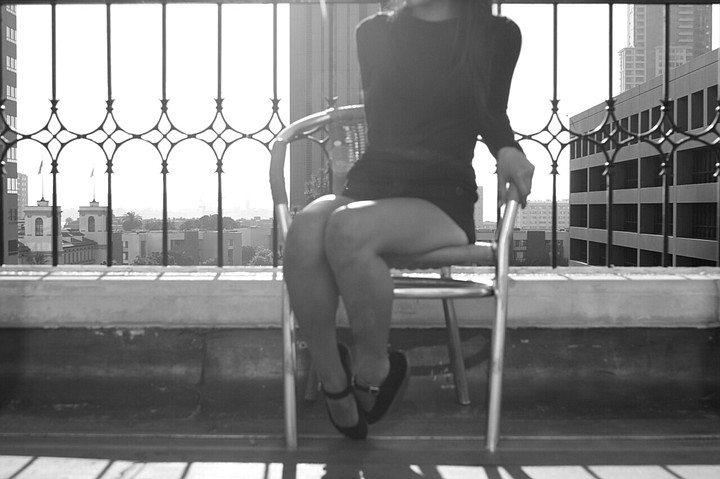
Rodelo’s urge to shoot comes out of a long-term love affair with cinema. The artist describes herself as “obsessed” with Federico Fellini in particular, and in love with movies in general. Where many people might see cinema as an expansion, or at least a descendant, of photography, Rodelo sees still images as a distillation of cinema.
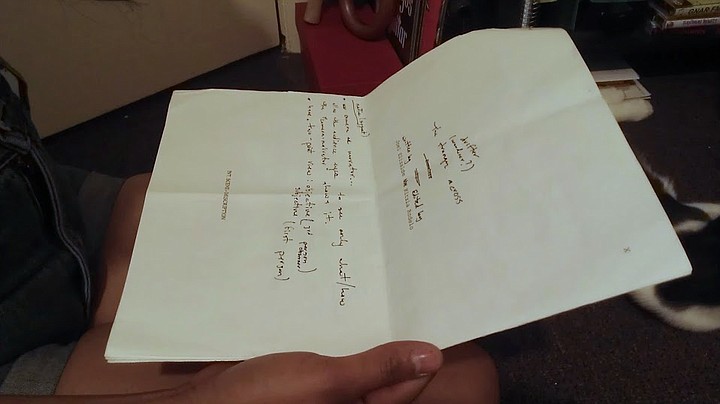
“When I’m walking around, looking at stuff, I feel like my eyes are the camera. I’m looking for that certain spot where I can take a photograph,” she says in her soft accent, which makes north comes out as nort and with as wit.
“Good photographers take their time before they work the shutter. They focus themselves on one subject.”
Among still photographers, her biggest inspiration is Lee Friedlander, best known for his images taken during the 1960s that capture NYC life. Some of his self-portraiture used mirrors and storefront reflections; pioneering the style that’s become common in “selfies.”
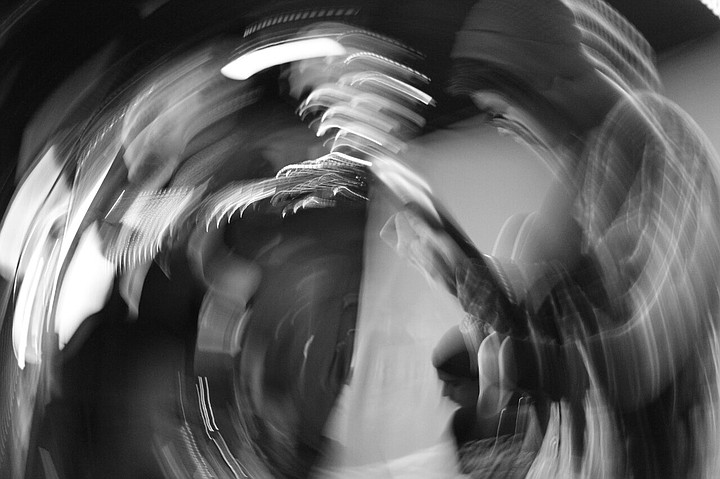
“I’m taking the semester off of school to focus on photography,” says Rodelo, normally a journalism student at Southwestern College. “A lot of my friends are telling me it’s a bad idea, but I don’t think it is. I’m going to focus on 35mm photography, but I just got an old Minolta Autopak from the 1970s. It was a good camera then. [The lens] isn’t plastic or plain glass, it’s good crystal, and it turns into a telephoto. It uses 110 film, which I’m told they don’t make anymore, but my mission is to find some and shoot with that camera.”
“They laughed at me at a camera shop when I wanted to get film for the Minolta. ‘They stopped making that film before you were born!’”
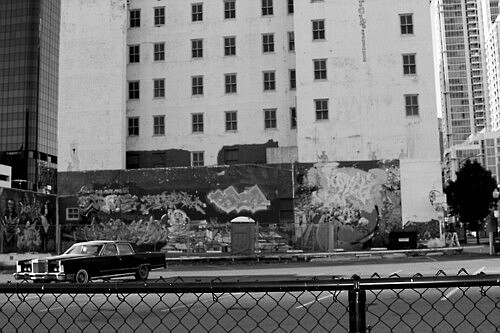
110 film cartridges, it turns out, were invented as an easy-to-use alternative to 35mm roll film. It’s quirky stuff, which fell out of use because it produces diminutive negatives which don’t enlarge well. Nevertheless, there’s a resurgence of analog camera enthusiasts who want to use the obsolete film, and 110 film is once again available. Rodelo is right on the cusp of that movement, and she may find unexpected support for 110 prints in the photography community at large.
Part of the joy of using cameras like the Minolta is that Rodelo can take multiple exposures. She likes to layer images on top of each other. Another one of her favorite tricks is to advance film partway so that she can take put two, separate images side by side on the same photograph. Playing around with film can get expensive, which is part of the reason that her photographer friends tried to caution her against focusing on 35mm and 110 film.
“I have a freezer full of undeveloped film,” she says, laughing. “I need to build a little darkroom so that I can start developing some of it without going broke. I took a job at Urban Outfitters so I could buy new cameras at a big discount,” says Rodelo. “They have recreations of old camera styles for sale. That way, I can try all sorts of new film cameras and see if I can find something that shoots well.”


“I’m really shy about my photography,” says Zia Rodelo. “I don’t show it to just anyone.”
25-year-old Rodelo, who lives in University Heights, declined the offer of a gallery show in her hometown of El Centro. She was into the idea at first, but she backed out when she got anxious about the exposure. Publishing her photographs and a link to her website in the Reader will be her first step, as it were, towards conquering that nervousness.

Rodelo’s urge to shoot comes out of a long-term love affair with cinema. The artist describes herself as “obsessed” with Federico Fellini in particular, and in love with movies in general. Where many people might see cinema as an expansion, or at least a descendant, of photography, Rodelo sees still images as a distillation of cinema.

“When I’m walking around, looking at stuff, I feel like my eyes are the camera. I’m looking for that certain spot where I can take a photograph,” she says in her soft accent, which makes north comes out as nort and with as wit.
“Good photographers take their time before they work the shutter. They focus themselves on one subject.”
Among still photographers, her biggest inspiration is Lee Friedlander, best known for his images taken during the 1960s that capture NYC life. Some of his self-portraiture used mirrors and storefront reflections; pioneering the style that’s become common in “selfies.”

“I’m taking the semester off of school to focus on photography,” says Rodelo, normally a journalism student at Southwestern College. “A lot of my friends are telling me it’s a bad idea, but I don’t think it is. I’m going to focus on 35mm photography, but I just got an old Minolta Autopak from the 1970s. It was a good camera then. [The lens] isn’t plastic or plain glass, it’s good crystal, and it turns into a telephoto. It uses 110 film, which I’m told they don’t make anymore, but my mission is to find some and shoot with that camera.”
“They laughed at me at a camera shop when I wanted to get film for the Minolta. ‘They stopped making that film before you were born!’”

110 film cartridges, it turns out, were invented as an easy-to-use alternative to 35mm roll film. It’s quirky stuff, which fell out of use because it produces diminutive negatives which don’t enlarge well. Nevertheless, there’s a resurgence of analog camera enthusiasts who want to use the obsolete film, and 110 film is once again available. Rodelo is right on the cusp of that movement, and she may find unexpected support for 110 prints in the photography community at large.
Part of the joy of using cameras like the Minolta is that Rodelo can take multiple exposures. She likes to layer images on top of each other. Another one of her favorite tricks is to advance film partway so that she can take put two, separate images side by side on the same photograph. Playing around with film can get expensive, which is part of the reason that her photographer friends tried to caution her against focusing on 35mm and 110 film.
“I have a freezer full of undeveloped film,” she says, laughing. “I need to build a little darkroom so that I can start developing some of it without going broke. I took a job at Urban Outfitters so I could buy new cameras at a big discount,” says Rodelo. “They have recreations of old camera styles for sale. That way, I can try all sorts of new film cameras and see if I can find something that shoots well.”
Comments